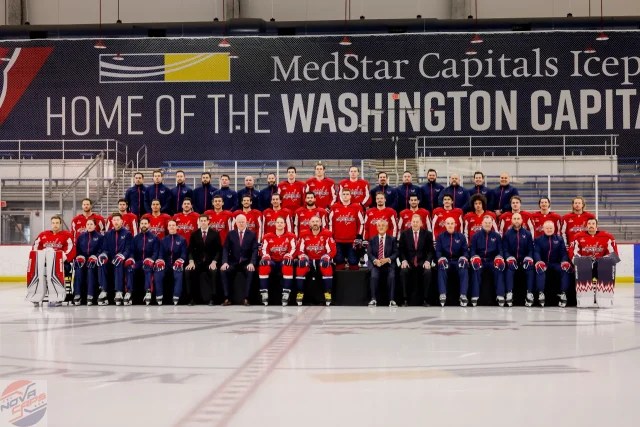We originally presented our first look at the Washington Capitals organizational depth chart back in May just prior to the 2024 NHL Entry Draft (here). The initial glance provided a pre-draft look at the Capitals organizational depth, position by position and by league.
May (Before)
The following table lists all of the Capitals players in their “system” (either drafted or signed by the Capitals) back on May 22. (Remember that the order of players listed in the table doesn’t represent projected lines but rather overall depth at the position. Also note that many players can play more than one position). [Click to enlarge].
Since the initial assessment the Capitals have undergone what many might consider a significant organizational overhaul. Armed with a large number of picks at the draft, sizable salary cap space at the start of free agency and the addition of a couple of high-caliber trades, then general manager Brian MacLellan was able to significantly restructure the organization as his swan song before heading off into the retirement sunset.
July (After)
In this post we take a look at the latest depth chart following the draft and start of free agency, and re-evaluate areas of strengths and weaknesses within the Capitals organization. [Click to enlarge].
Reshaping The Blueline
Prior to the draft the Capitals organization had a sizable gap on the left side of the defense throughout the entire organization. The Capitals addressed that by adding star Defenseman Jakob Chychrun and trading up to draft Cole Hutson (43rd overall) and drafting Leon Muggli (52nd overall) in the second round. There is still work to do on the left side of the blueline, but organizationally they are far better off than they were back in May.
The Capitals also added Matt Roy on the right side, which is also a significant improvement to the Capitals Blueline.
Forward Thinking
Adding scoring was no doubt at the top of Brian MacLellan’s “to do” list for the offseason. The Capitals added Pierre-Luc Dubois from the Los Angeles Kings in a straight-up trade for goaltender Darcy Kuemper. The Capitals also acquired left-wing Andrew Mangiapane from the Calgary Flames for the Colorado Avalanche’s 2025 second-round pick the Capitals obtained in the Lars Eller deal.
The Capitals also added right-wingers Brandon Duhaime and Taylor Raddysh in free agency.
Connor McMichael, Sonny Milano and Aliaksei Protas will likely battle for line positions on the left side. The center positions seem relatively locked in, although McMichael and Protas can play the middle if necessary. Ivan Miroshnichenko will also figure into the position battle and get games this season.
The lingering doubt surrounding T.J. Oshie’s future seems all but a formality, as the Capitals will need his long-term injured reserve (LTIR) money to remain cap compliant. Also, as previously noted, MacLellan brought in two right-wingers for the potential of a vacancy opened by an Oshie absence.
Nic Dowd will have new linemates on the fourth line for the 2024-25 season. Beck Malenstyn was traded to Buffalo for the 43rd overall pick, which was used to select defenseman Cole Hutson. Nicolas Aube-Kubel was not re-signed by the team. To Dowd’s credit, the 4th line has been solid in his tenure, even with revolving wingers.
The Capitals have added scoring value to their forward corp, the question remains how much and was it enough.
Projection
So what could the restructuring of the team mean as far as improved performance? Justin took a look at one metric, Goals Above Replacement (GAR) and compared the additions and subtractions for the coming season.
Overall, we see a projected total of 4.7 GAR moving off the roster as it stood after the playoffs ended. Jensen was by far the most valuable asset moved in terms of GAR, but we’ll see how MacLellan parlayed that into a far more valuable player.
These six players add up to 23.9 in additional projected GAR for the 2024-25 season. That’s a substantial addition, considering it’s an increase of 19.2 in projected GAR. Also, the average GAR projection for the acquired players is 3.98, compared to the average GAR for outgoing players of 1.175.
By Jon Sorensen


























